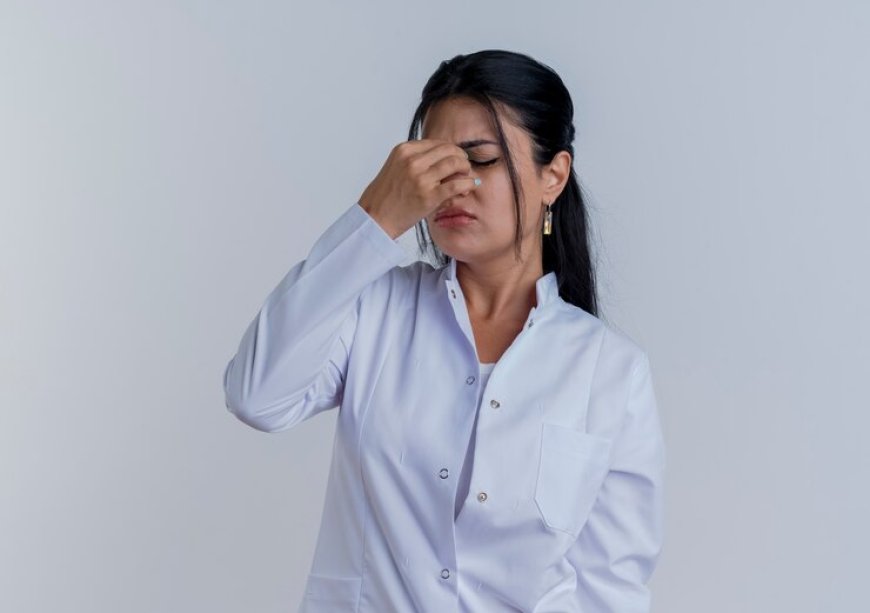Lazy Eye Treatment: What Parents Need to Know About Diagnosis and Recovery
As a parent, understanding the diagnosis, treatment options, and recovery process is crucial to ensuring your child’s long-term eye health.

Lazy eye, medically known as amblyopia, is one of the most common vision problems in children. It occurs when one eye does not develop proper vision, often due to poor communication between the brain and the weaker eye. If left untreated, lazy eye can lead to permanent vision loss in the affected eye. As a parent, understanding the diagnosis, treatment options, and recovery process is crucial to ensuring your child’s long-term eye health.
What Is Lazy Eye?
Lazy eye develops when one eye is weaker than the other, causing the brain to favor the stronger eye. This condition typically begins in early childhood and can affect a child’s depth perception and overall vision. The primary causes of lazy eye include:
-
Refractive Errors: Differences in vision clarity between the two eyes (e.g., farsightedness or astigmatism) can cause the brain to rely more on the stronger eye.
-
Strabismus: Misalignment of the eyes, such as one eye turning inward or outward, can lead to amblyopia.
-
Deprivation Amblyopia: This occurs when something obstructs vision in one eye, such as a cataract.
Signs and Symptoms of Lazy Eye
As a parent, it’s essential to watch for early signs of lazy eye. Symptoms may include:
-
One eye that wanders inward or outward.
-
Poor depth perception.
-
Squinting or closing one eye to see better.
-
Tilting the head to focus on an object.
-
Difficulty with reading or other visual tasks.
If you notice any of these symptoms, consult an eye care professional promptly. Early detection is key to successful treatment.
Diagnosing Lazy Eye
Lazy eye is typically diagnosed during a comprehensive eye exam. Pediatricians or eye specialists may use the following methods:
-
Visual Acuity Test: This test measures the sharpness of vision in each eye.
-
Eye Alignment Test: Doctors check for signs of strabismus or misalignment.
-
Refractive Error Assessment: A refraction test determines if glasses are needed to correct vision.
-
Eye Health Examination: This involves examining the structure of the eyes to rule out conditions like cataracts.
Treatment Options for Lazy Eye
The goal of lazy eye treatment is to strengthen the weaker eye and improve coordination between the two eyes. Treatment methods include:
1. Corrective Eyeglasses
Eyeglasses can correct refractive errors and balance the vision between both eyes. In some cases, glasses alone are enough to treat mild amblyopia.
What Parents Should Know:
-
Ensure regular follow-ups to adjust prescriptions as needed.
-
Encourage your child to wear their glasses consistently.
2. Eye Patching
Covering the stronger eye with a patch forces the brain to rely on the weaker eye, gradually improving its function.
What Parents Should Know:
-
Consistency is crucial; the patch may need to be worn for several hours a day.
-
Make the process fun by using colorful or patterned patches.
3. Atropine Drops
Atropine drops are used to temporarily blur the vision in the stronger eye, encouraging the weaker eye to work harder.
What Parents Should Know:
-
This method is often easier to implement than patching for younger children.
-
Side effects may include light sensitivity or difficulty focusing.
4. Vision Therapy
Vision therapy involves guided exercises that improve eye coordination and visual processing. These exercises may be performed at home or in a clinical setting.
What Parents Should Know:
-
Vision therapy is most effective when combined with other treatments like glasses or patching.
-
Commitment to regular sessions is essential for success.
5. Surgery
In cases where strabismus is causing lazy eye, surgery may be required to realign the eye muscles.
What Parents Should Know:
-
Surgery is typically a last resort when other treatments have not been successful.
-
Post-surgical follow-up is critical to monitor recovery.
Recovery and Prognosis
The earlier amblyopia is treated, the better the outcome. Most children respond well to treatment, and their vision can improve significantly over time. Recovery timelines vary based on factors such as:
-
Age: Younger children tend to respond more quickly to treatment.
-
Severity: Severe cases may require more intensive or prolonged treatment.
-
Compliance: Consistent use of glasses, patches, or drops is crucial for success.
Tips for Parents
As a parent, your role in your child’s treatment journey is vital. Here are some tips to support your child:
-
Be Patient: Treatment can take weeks or months to show results. Stay positive and encourage your child.
-
Create a Routine: Incorporate patching or vision exercises into daily routines to build consistency.
-
Reward Progress: Use small rewards or incentives to motivate your child during treatment.
-
Communicate: Explain the importance of treatment in simple terms to help your child understand why it’s necessary.
-
Monitor Progress: Attend regular check-ups with your eye care provider to assess improvements and make adjustments.
Preventing Lazy Eye
While not all cases of amblyopia can be prevented, early detection and proactive care can reduce the risk of complications. Ensure your child has regular eye exams, even if no symptoms are present. Most pediatricians recommend an initial vision screening at six months, followed by routine exams at age three and before starting school.
Conclusion
Lazy eye is a manageable condition, especially when diagnosed and treated early. As a parent, being informed about the causes, treatment options, and recovery process empowers you to make the best decisions for your child’s eye health. With consistent care and support, your child can achieve improved vision and better quality of life.
If you suspect your child has lazy eye or if they’ve been diagnosed, consult with an eye care professional to create a tailored treatment plan. Early intervention is the key to success.
What's Your Reaction?


















